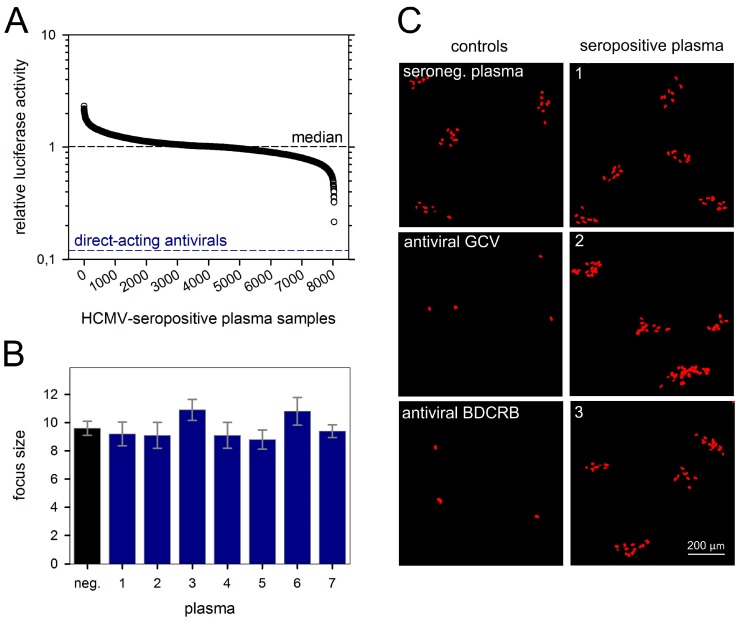Figure 2.
Plasma from HCMV-seropositive donors does not inhibit cell-associated viral spread. HFFs were seeded on microplates and infected with Merlin-pAL1502-GLuc at infection multiplicities of 0.002 FFU/cell. The day after infection (p.i.), plasma samples were added at a 50-fold dilution, and cells were incubated further. On day 5 p.i., medium was exchanged, and on day 6 p.i., supernatants were harvested for analysis of luciferase activities. Two direct-acting antivirals (GCV and BDCRB) served as positive controls for inhibition of cell-associated HCMV spread. (A) GLuc activities of individual plasma samples divided by the mean value of whole plate level (i.e., relative luciferase activity). Each circle represents plasma from one of 8034 HCMV-seropositive donors. The median of relative GLuc activities of all tested samples is depicted by a dashed horizontal line and represents unrestricted focal growth. The lower dashed line reflects maximal reduction of focal growth by direct-acting antivirals. (B) Among the 14 plasma samples that showed the highest reduction of GLuc activity, seven samples were randomly selected for a retest via immunofluorescence detection of viral IE antigens, but none of them had an effect on focal growth as compared to plasma from an HCMV-seronegative donor. Bars represent mean values of 10 foci, error bars represent the SEM. (C) Representative images from three of these seven retested plasmas are shown.

